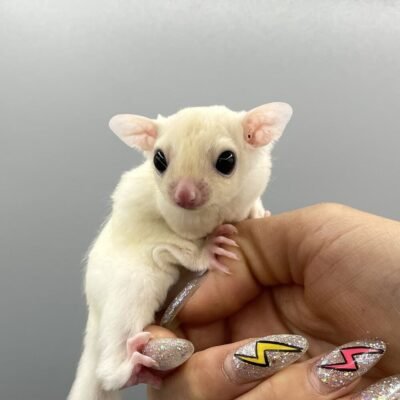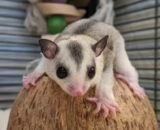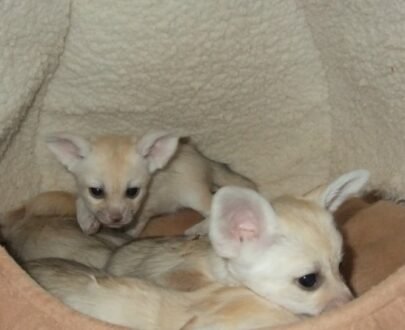- You have no items in your shopping cart
- Subtotal: $0.00
MALE SUGAR GLIDER FOR SALE
$650.00
MALE SUGAR GLIDER FOR SALE

The Male Sugar Glider: Gliders on the Go, But Not Quite Family Men
Male sugar gliders are fascinating creatures with distinct characteristics and behaviors that complement the social structure of their colonies. Here’s a breakdown of what makes them unique:
Appearance:
- Matchmaker, Matchmaker: Males generally resemble females in size and overall appearance. They have a squirrel-like body with soft, gliding fur, typically grey or brown with black stripes. Their most distinctive feature, the patagium, is a furry membrane stretching from their wrists to their ankles, allowing them to glide between trees.
- Subtle Differences: In some species, males may be slightly larger than females. You might need a very close look to tell the difference, though! One potential clue is the scent gland.
Scent Gland:
- Marking Territory: Unlike females, males have a scent gland located on their forehead. This gland appears as a small bald spot and is used to mark their territory and potentially communicate with other sugar gliders.
Social Behavior:
- Lone Wolves (Sort Of): Male sugar gliders tend to be solitary creatures outside of mating season. They have overlapping territories with several females and may not interact with other males or females very often, except during breeding. This solitary lifestyle helps to minimize competition for food resources within the colony.
- Dominant Demeanor: In some sugar glider colonies, males may exhibit dominance hierarchies. Larger and older males may have priority access to mates and preferred feeding areas.
Reproduction:
- Mating Season: Similar to females, males can breed throughout the year, although breeding is more frequent during specific seasons depending on location and climate.
- Mating Rituals: During breeding season, males may engage in courtship behaviors to attract females. These can include scent marking, vocalizations, and gliding displays.
- No Diaper Duty: After mating, the male plays no role in raising the young. The responsibility of caring for the joeys falls solely on the females and other females within the colony.
Importance to the Colony:
- Genetic Diversity: While they don’t participate in raising young, male sugar gliders play a vital role in ensuring genetic diversity within the colony. Competition among males during breeding season can lead to stronger genes being passed on to the next generation. small pets for sale
Threats and Conservation:
- Habitat Loss: Like females, male sugar gliders face threats like habitat loss due to deforestation.
- Importance of Conservation: Understanding the roles of both males and females is crucial for sugar glider conservation efforts. Protecting their habitat and promoting sustainable practices is essential for the survival of these amazing creatures.
By understanding the unique characteristics and behaviors of both male and female sugar gliders, we can appreciate the complexity of their social structure and their importance within the ecosystem. sugar glider pet for sale

Categories: Marsupial, Nocturnal, Small Pets, Sugar Glider For Sale
Tags: african pygmy hedgehog for sale, baby hedgehog, baby hedgehog adoption, baby hedgehog as pets, baby hedgehog breeder near me, baby hedgehog breeders, baby hedgehog for sale, baby hedgehog price, baby sugar glider for sale near me, bush baby, Bush Baby for sale, buy sugar glider, buy sugar gliders, buying a sugar, Capuchin money for sale, chinchillas, chinchillas for sale, coatimundi, coatimundi for sale, domesticated fox for sale, Dwarf Goats, Dwarf Pig, exotic animals for sale, exotic animals for sale near me, exotic animals for sale online, Exotic pets for sale, exotic pets for sale in texas, exotic pets for sale near me, exotic pets for sale online, Farm Animals, Farm animals For Sale, fennec fox, fennec fox for adoption, Fennec Fox For Sale, fennec fox pet, finger monkey for sale, flying squirrels, flying squirrels for sale, fox for sale, gliders sugar glider, healthy and trained sugar gliders, Hedgehog For Sale, hedgehog for sale in california, hedgehog for sale in nj, hedgehog for sale in ohio, hedgehog for sale near me, hedgehog pet for sale, hedgehog pet for sale near me, hedgehog price, Hedgehogs, kinkajou for sale, kinkajous, kinkajous for sale, Kune Kune Pig, lemurs, lemurs for sale, Long-eared hedgehog, male sugar gliders, marmoset monkey for sale, Marmosets For Sale, Marsupial, Mini Zebu, Monkeys for sale, Nigerian Dwarf Goats, pet monkey for sale, pet squirrel for sale, piglets, piglets for sale, prairie Dogs, prairie Dogs for sale, Primate, Pygmy Goats, pygmy marmoset for sale. marmoset, red fox for sale, red kangaroos, Red kangaroos for sale, Rodents, Ruffed Lemur, sale healthy and trained, small animals for sale, small exotic pets for sale, Small Pets, small pets for sale, small pets for sale near me, squirrel for sale, sugar glider breeders, sugar glider breeders near me, sugar glider for sale, sugar glider for sale new jersey, sugar glider near me, sugar glider pet for sale, Sugar Gliders, trained sugar gliders for sale, where to buy a sugar glider, Zoological










Customer reviews
Reviews
There are no reviews yet.
Write a customer review